Air Operations, Carolines - VII Bomber Command B-24s attack the Truk Atoll.
- XIII Bomber Command B-24s attack the Truk Atoll and shipping in the Palau Islands.
[  | |   ] ]
Air Operations, CBI
CHINA
- 11 14th Air Force fighter-bombers attack Japanese Army cavalry, barracks, and river traffic at Hengshan and Siangtan.
INDIA
- 34 10th Air Force B-24s airlift ammunition to Imphal.
[  | |   ] ]
Air Operations, Europe - The US 8th Air Force makes its first 'shuttle raid' between Britain and bases in Russia, bombing oil refineries in Ruhland, south of Berlin.
- In a massive raid on Berlin 1,000 Allied bombers, escorted by 1,200 fighters, inflict heavy damage on the German capital and nearby areas.
- In Britain RAF fighters are beginning to have more success against the flying bombs and bombing has knocked out some of the launching ramps in France. The fighter pilots locate, chase and destroy the rockets in mid-flight. The target can only fly in a straight line so presents an easy, but fast, target.
RAF BOMBER COMMAND
Daylight Ops:
- 322 aircraft of Nos. 3, 6 and 8 Groups attack 3 flying-bomb sites. In this total are 165 Halifaxes, 142 Lancasters and 15 Mosquitos. Because of cloud, 2 of the raids are abandoned after only 17 aircraft have bombed. The third target, at St Martin l'Hortier, is bombed throught 10/10ths cloud. There are no losses.
Evening Ops:
- 133 Lancasters and 6 Mosquitos attack the synthetic oil plant at Wesseling. All the aircraft are from No. 5 Group except for 5 Lancasters from No. 1 Group. The weather forecast for the target area predicts clear conditions but the bombing force encounters 10/10ths low cloud. The planned No. 5 Group low-level marking method can not be used and the reserve method, in which the Lancasters bombed on H2S, is used instead. German night fighters make contact with the bomber force and 37 Lancasters are lost, Nos. 44, 49 and 619 Squadrons each losing 6 aircraft. Post-raid reconnaissance shows that only slight damage is caused to the oil plant but a secret German report quoted in the British Official History records a 40 per cent production loss at Wesseling after this raid. It is possible that the loss was only of short duration.
- 123 Lancasters and 9 Mosquitos of Nos. 1, 5 and 8 Groups attack the synthetic oil plant at Scholven/Buer. The target is also cloud-covered and the No. 5 Group marking method can not be used, the Pathfinder aircraft present provides Oboe-based skymarking instead. Post-raid photographs appear to show no new damage but a German report indicates a 20 percent production loss.
Other Ops:
- 32 Mosquitos are sent to Berlin, 13 Stirlings lay mines off Guernsey, St Malo and St Nazaire, 10 Halifaxes are on Resistance operations, and there are 41 Mosquito patrols.
- 1 Mosquito of No. 100 Group is lost.
US 8th AIR FORCE
FRANCE:
- Late in the afternoon 70 2nd Bomb Division B-24s, escorted by 99 VIII Fighter Command P-47s, attack a total of 39 V-weapons sites at Siracourt and two German Army supply points. One escort fighter group strafes rail traffic and canal barges.
GERMANY:
- 456 1st Bomb Division B-17s, 103 3rd Bomb Division B-17s, and 47 2nd Bomb Division B-24s attack the city of Berlin.
- 252 2nd Bomb Division B-24s, 85 3rd Bomb Division B-17s, and 12 1st Bomb Division B-17s attack assigned industrial targets and several targets of opportunity, mostly in the Berlin area.
- Escort for the Berlin-area heavy-bomber missions is provided by 958 VIII Fighter Command fighers and 441 IX Fighter Command fighters.
- 16 escort fighters and 14 pilots are lost
- In the second Operation FRANTIC of the war -- the first from the U.K. -- 114 3rd Bomb Division B-17s, escorted by 70 4th an 352nd Fighter Group P-51s, attack oil targets around Ruhland (south of Berlin) and proceed to bases in the Soviert Union. 70 P-51 escorts proceed with the B-17s all the way to the Soviet Union, and 162 escort fighters return to their bases in England.
- 1 B-17 is lost to unknown causes
- USAAF escort fighters down 17 Luftwaffe fighters over Germany and 7 Luftwaffe fighters over Poland.
SOVIET UNION:
- During the night, Luftwaffe bombers attack the USAAF base at the Poltava Airdrome by flare light. 47 of the 73 B-17s at the base are destroyed and many others are heavily damaged, as are a number of the P-51s. Large supplies of fuel and ammunition are also destroyed.
US 9th AIR FORCE
FRANCE:
- More than 250 IX Bomber Command B-26s and A-20s attack 13 V-weapons sites in the Pas-de-Calais area.
- During the early evening, IX TAC fighter-bomber pilots down 1 Luftwaffe fighter over Rouen and 2 Luftwaffe fighters near Paris.
US 12th AIR FORCE
ITALY:
- 12th Air Force B-25s and B-26s attack rail bridges in north and north-central Italy and shipping in Leghorn harbor.
- XII TAC A-20s attack ammo dumps.
- XII TAC fighter-bombers attack rail and road targets near the German Army's new Gothic Line.
[  | |   ] ]
Air Operations, Marianas - Throughout the day, Task Force 58 undertakes a fruitless chase after the retiring Japanese Navy's 1st Mobile Fleet, then turns back toward Saipan at 2030 hours. Fighter sweeps mounted by Task Force 58.4 against Guam airfields are not opposed by Japanese aircraft, and even antiaircraft opposition is light.
- A VF-24 F6F downs a G4M 'Betty' bomber at sea at 0755 hours.
- 2 VF-28 F6Fs down an A6M Zero at sea 30 miles from Task Force 58 at 0815 hours.
- A VF-31 F6F downs a G4M 'Betty' bomber at sea 25 miles from the task force at 0950 hours.
- A VF-35 F6F downs a G4M 'Betty' bomber at sea at 1440 hours.
[  | |   ] ]
Air Operations, New Guinea - V Bomber Command B-24s attack the Kamiri airfield on Noemfoor.
- B-25s attack occupied villages in the Maffin Bay area.
- A-20s attack targets of opportunity around Paniai Lake.
- V Fighter Command P-39s and RAAF aircraft attack dumps, bivouacs, and other targets in the Wewak area.
[  | |   ] ]
Atlantic US Coast Guard cutters 83415 and 83471 are sunk in the storm.
[  | |   ] ]
Eastern Front Gen Alexei N. Krutikov's 7th Army begins a new phase of the Russian attacks against Finland. The advance is now against the Finnish VI Corps between Lake Ladoga and Lake Onega. The Russians also begin to occupy the islands off the Karelian Isthmus. This operation is complete in 3 or 4 days.
FINNISH SECTOR
The Soviet Karelian Front begins its offensive on the Svir River, the 7th and 32nd Armies leading the assault. The Soviets immediatlely lance 10 miles into the Finnish positions.[MORE]
[  | |   ] ]
Italy In the British 8th Army sector, advance guards of the Polish II Corps reach the Chienti River and manage to establish a bridgehead there, despite the enemy's prepared defenses. The South African 6th Arm Div captures the heights overlooking Chiusi but cannot get into the town. The 36th Div of the US IV Corps continues its slow advance along Highway 1 and comes within 8 miles of Grosseto.[ITALY]
[  | |   ] ]
Marianas On Saipan, slight progress by the US 27th Div in the south towards Point Nafutan.[SAIPAN]
[  | |   ] ]
Mediterranean British and Italian human torpedoes sink the cruiser Bolzano at La Spezia.
[  | |   ] ]
New Guinea The Owi airfield is put into use by fighters of the 5th Air Force.
On Biak, the 1st Battalion of the 162nd Infantry continues the attack on the West Caves area without any progress, although tanks and flame throwers are used. Japanese efforts to withdraw from that position through the 186th Infantry lines are frustrated. The 186th Infantry probes the enemy position, called the Teardrop, just northwest of Hill 320. The 3rd Battalion, 163rd Infantry, which was to have driven into the Teardrop from the northwest and north in conjunction with the 186th Infantry's pressure from the south and southwest, is too far north to reach it.
In the Wakde-Sarmi area, after probing to locate strongpoints, the 3rd Battalion of the 20th Infantry renews the attack toward Lone Tree Hill but meets such heavy fire from well-organized positions that it pulls back to the east bank of the Snaky River. During the night, the Lone Tree Hill position is hit by artillery and mortar fire.
The Alamo Scouts conduct a reconnaissance of possible landing sites at Noemfoor Island. Lt-Gen Krueger designates the 158th RCT as the Noemfoor Task Force, commanded by Brig-Gen Edwin D. Patrick. Over 13,500 men will be involved in the landing. D-day is set for 2 July. Krueger designates the 503rd Parachute Infantry Regiment and the 34th Infantry Regiment as the task force reserve. Rear-Adm William M. Fechteler commands Task Force 77, with 3 cruisers, 22 destroyers, and 3 rocket-firing LCIs.
[  | |   ] ]
Pacific - The US destroyer Newcomb (DD-586) and high speed minesweeper Chandler (DMS-9) sink the Japanese submarine I-185 90 miles northeast of Saipan. The Japanese guardboat Kompira Maru is sunk by gunfire off Tinian.
- The US submarine Bluefish (SS-222) sinks the Japanese army cargo ship Kanan Maru (3312t) off the southern approaches to Makassar Strait.
- The US submarine Narwhal (SS-167) sinks the Japanese powered sailboat No.2 Shinshu Maru 12 miles southwest of Culasi.
[  | |   ] ]
Soviet Union, Strategy The Red Army is ready to launch Operation BAGRATION: 2.5 million troops, 5,200 tanks, 31,000 artillery pieces, 2,300 Katyushas, 70,000 motoer vehicles and 5,300 aircraft will be involved in the attack. On the northern flank is the 1st Baltic Front (4th Shock, 6th anr 43rd Armies - 359,000 troops and 582 tanks and self-propelled guns, supported by 1,094 aircraft of the 3rd Air Army); to the south stands the 3rd Belorussian Front (5th, 5th Guards Tank, 11th Guards, 31st and 39th Armies - 579,000 troops and 1,500 tanks and self-propelled guns, supported by 1,991 aircraft of the 1st Air Army); in the center is the 2nd Belorussian Front (33rd, 49th and 50th Armies - 319,000 troops and 251 tanks ans self-propelled guns, supported by 593 aircraft of the 4th Air Army); to its south the 1st Belorussian Front (3rd, 28th, 48th, 61st and 65th Armies - front total of 1,071,000 troops and 896 tanks and self-propelled guns, supported by 2,033 aircraft of the 16th Air Army).
The 1st Baltic and 3rd Belorussian Fronts will annihilate the flanks of the 3rd Panzer Army. The 3rd Belorussian Front will strike toward Minsk, the 1st Belorussian Front will encircle the German 9th Army at Bobruisk and then link up with the 3rd Belorussian at Minsk. Both fronts will then advance to the Russo-Polish border. As they do so the 2nd Belorussian Front will engage and hole the German 4th Army. The 1st Baltic and 3rd Belorussian Fronts are under the command of Marshal Zhukov, the 1st and 2nd Belorussian Fronts under Marshal Vasilevsky.
German Army Group Center totals 580,000 troops: 3rd Panzer Army in the north (VI, IX and LIII Corps, plus 2 reserve divisions - 160,000 troops); 4th Army (XII, XXVII and XXXIX Corps plus 1 reserve division - 165,000 troops); 9th Army (XXXV, XLI and LV Corps plus 1 reserved division - 170,000 men); and 2nd Army (VIII, XX and XXIII Corps - 85,000 troops). The army group has 9,500 artillery pieces and 900 tanks, the 6th Air Fleet deployin g 775 aircraft.
[  | |   ] ]
Western Front The divisions of the American VII Corps, the 9th, 79th and 4th, prepare for the final attack on Cherbourg. At sundown Gen Lawton Collins, the Corps Commander, invites the Commander of the Cherbourg garrison, Gen Karl Wilhelm von Schlieben, to surrender. No reply comes from Cherbourg.
[  | |   ] ]
Images from June 21, 1944
Carentan, Normandy, June 21, 1944
|
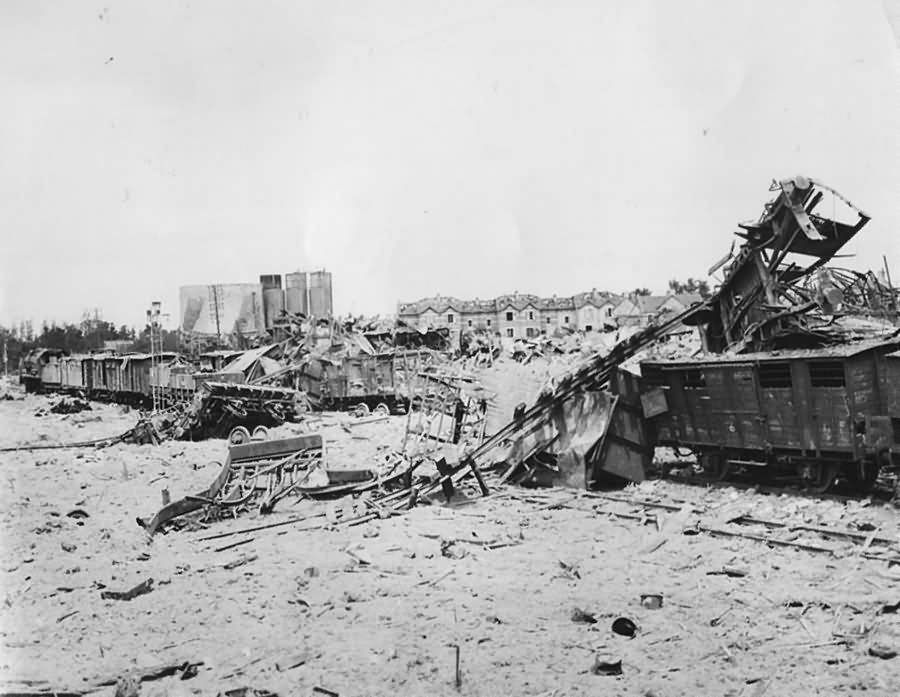 |
|
German Prisoners of War in Portoferraio
|
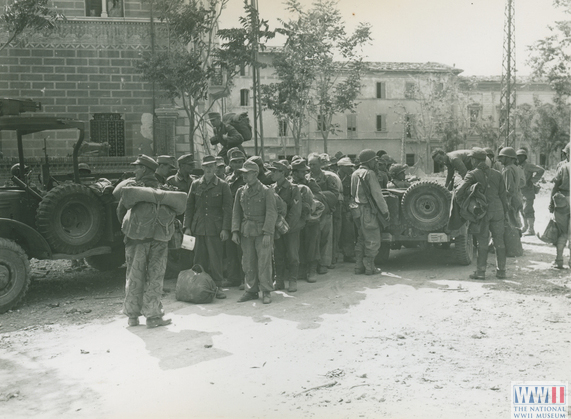 |
|
US GI, June 21, 1944
|
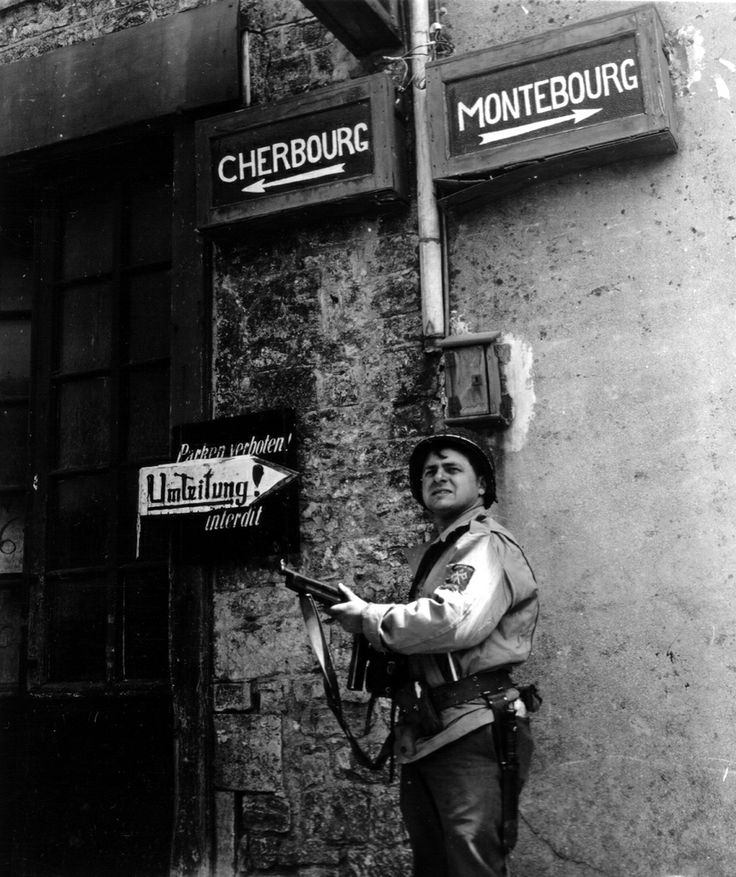 |
|
Panzer V 'Panther'
|
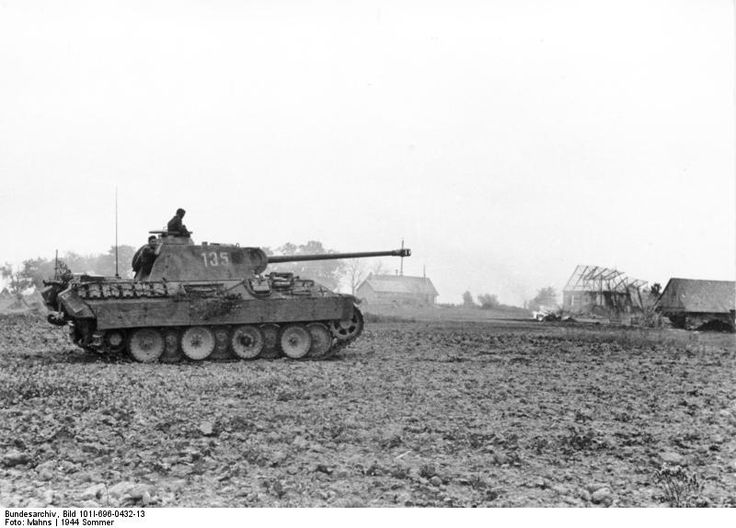 |
|
German Paratrooper with a MG 42
|
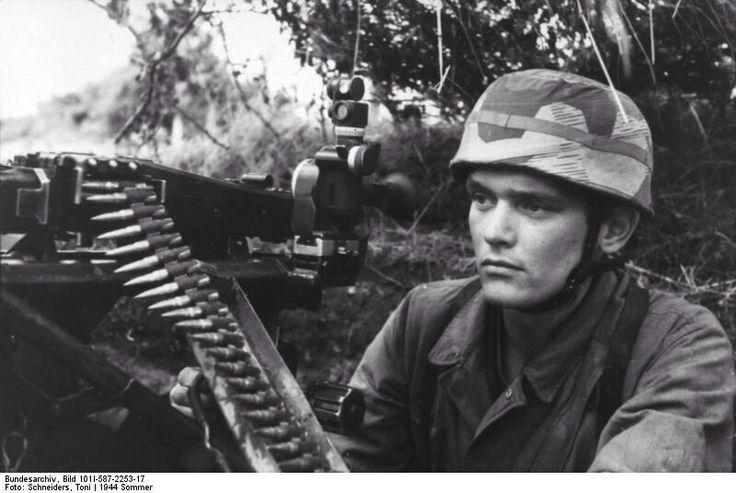 |
|
Destroyed English Cruiser Tank VIII Cromwell
|
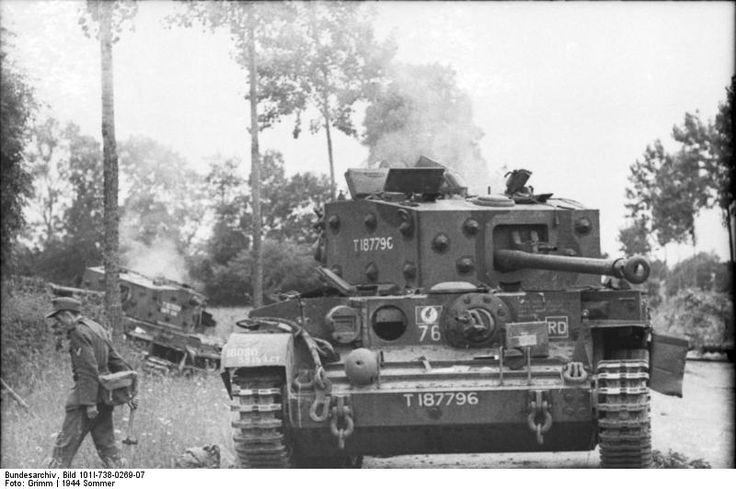 |
|
British POWs Captured by the Hitlerjugend
|
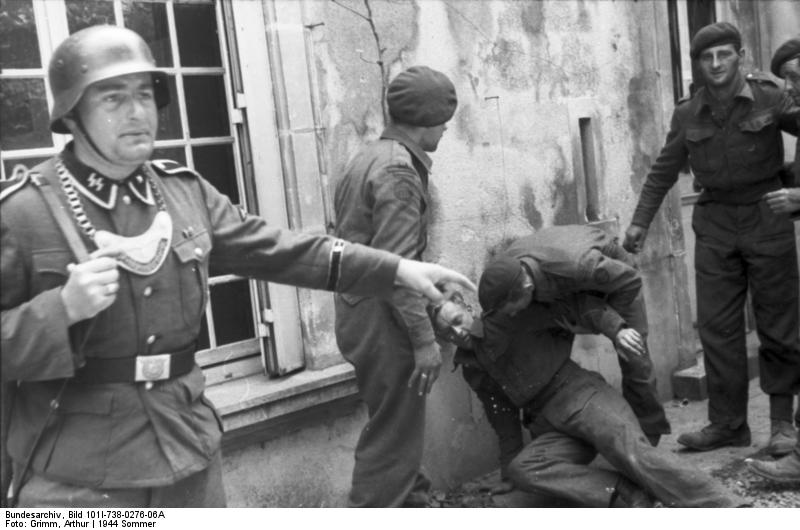 |
|
M-20 Armored Utility Car
|
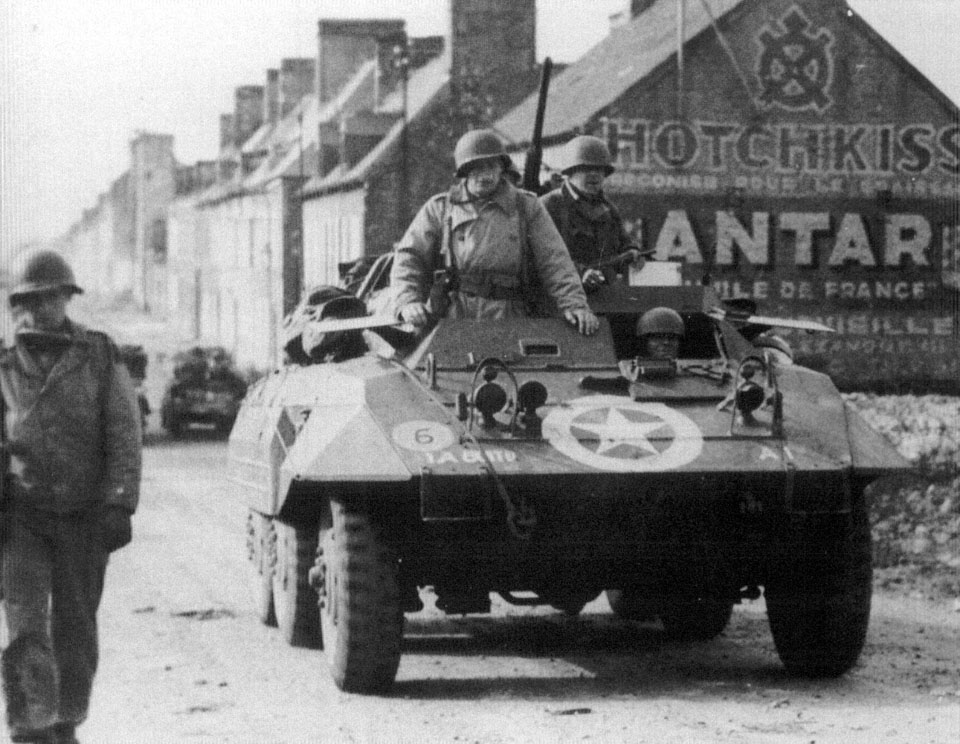 |
|
Paratroopers Pulling a Handcart
|
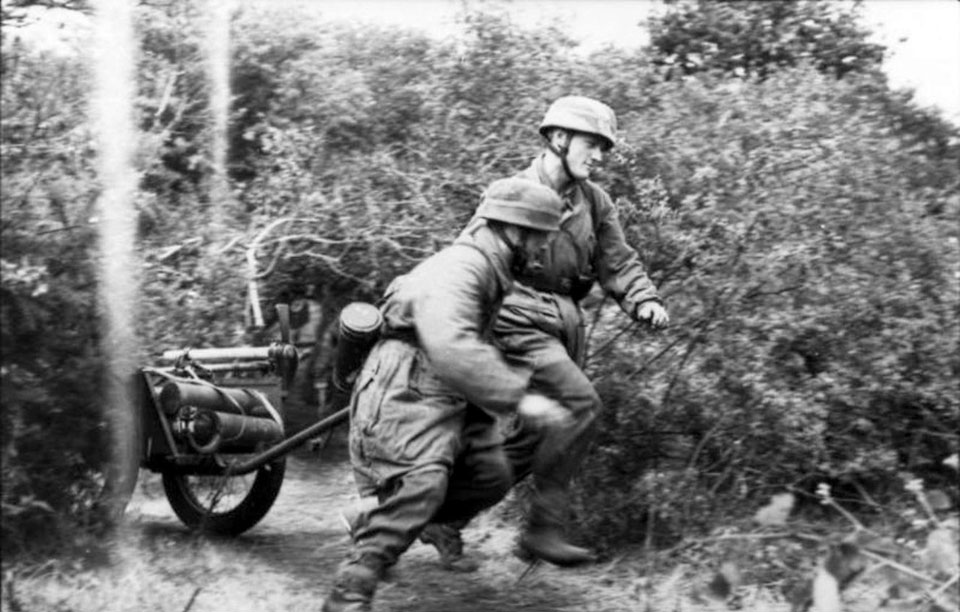 |
|
A Panzer IV of the 12th SS Panzer Division
|
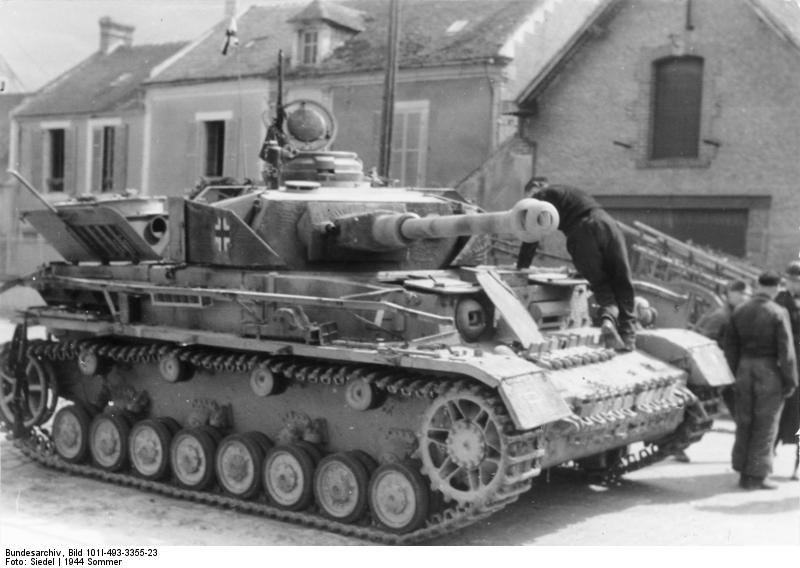 |
|
German Boy-Soldier with an Ofenrohr
|
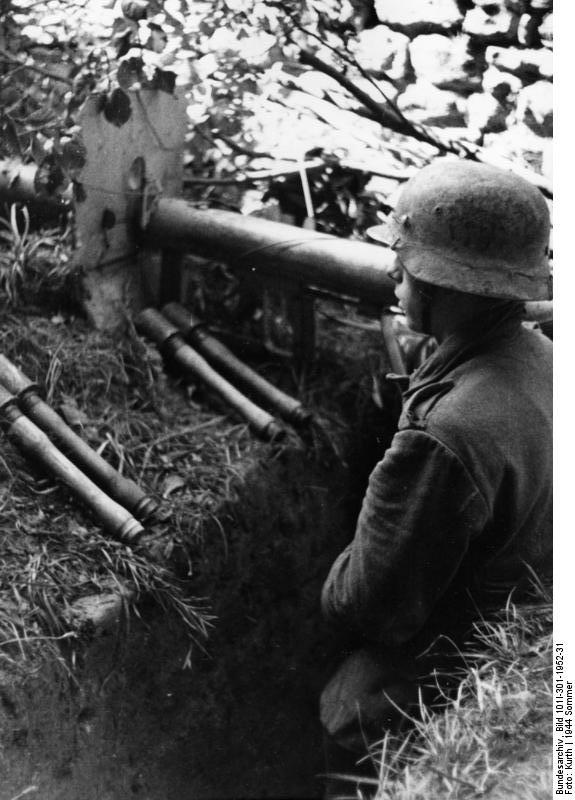 |
|
German Soldiers with a Captured American Jeep
|
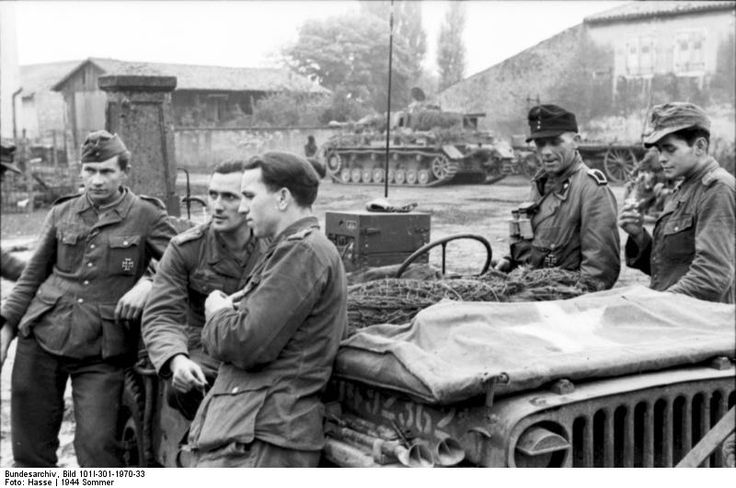 |
|
Marines Fire Captured Mountain Gun
|
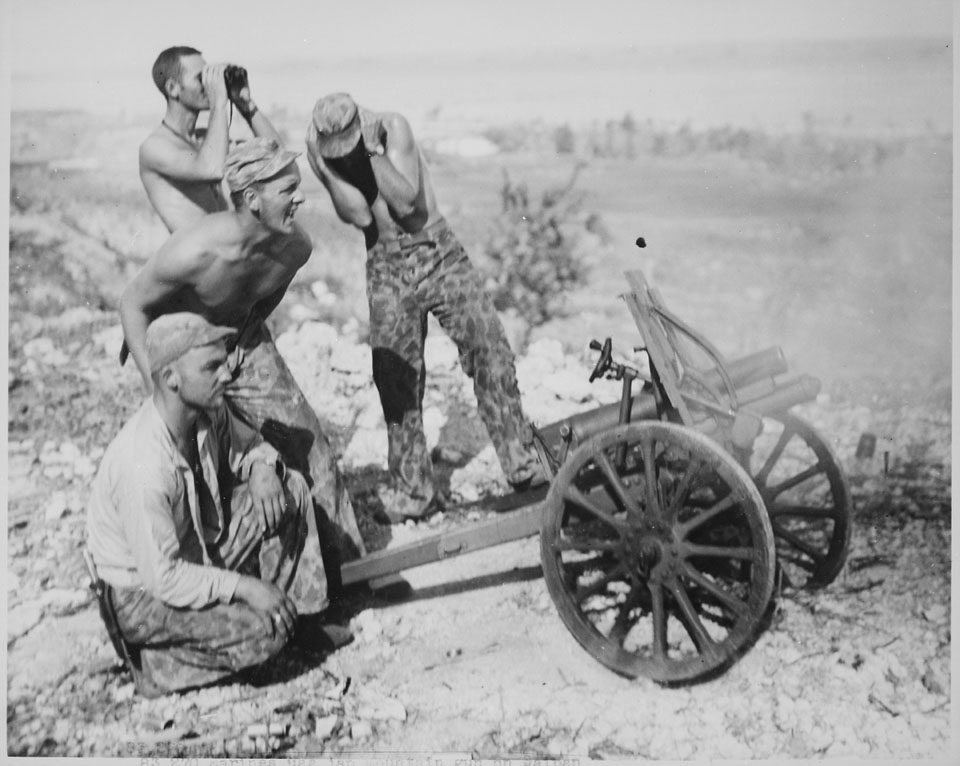 |
|
US Army Jeep Named 'Always Ruth'
|
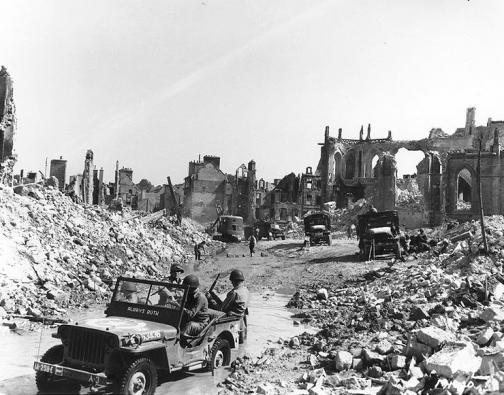 |
|
Marauders of the 9th Air Force
|
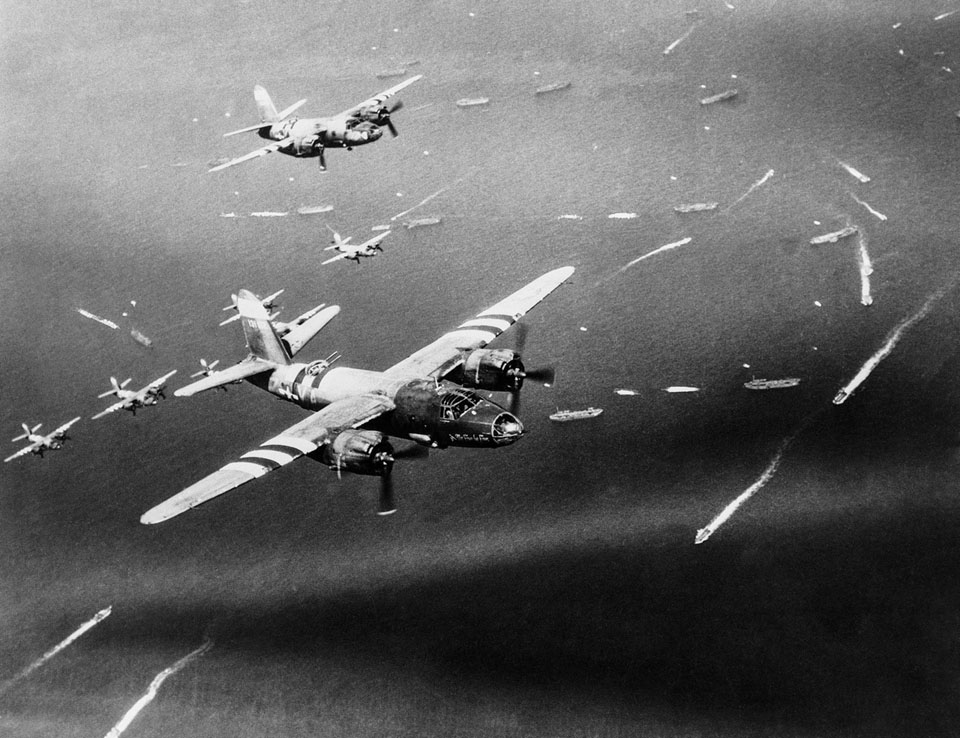 |
|
Panther on the Eastern Front, June 21, 1944
|
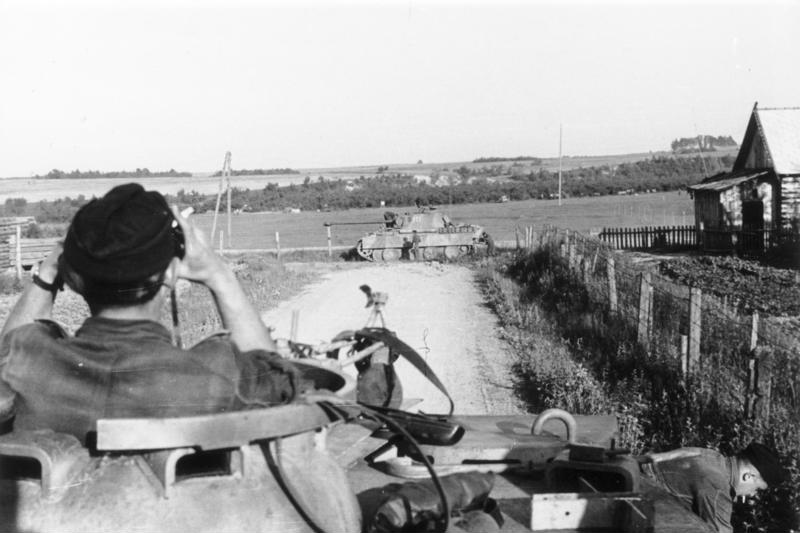 |
|
|















